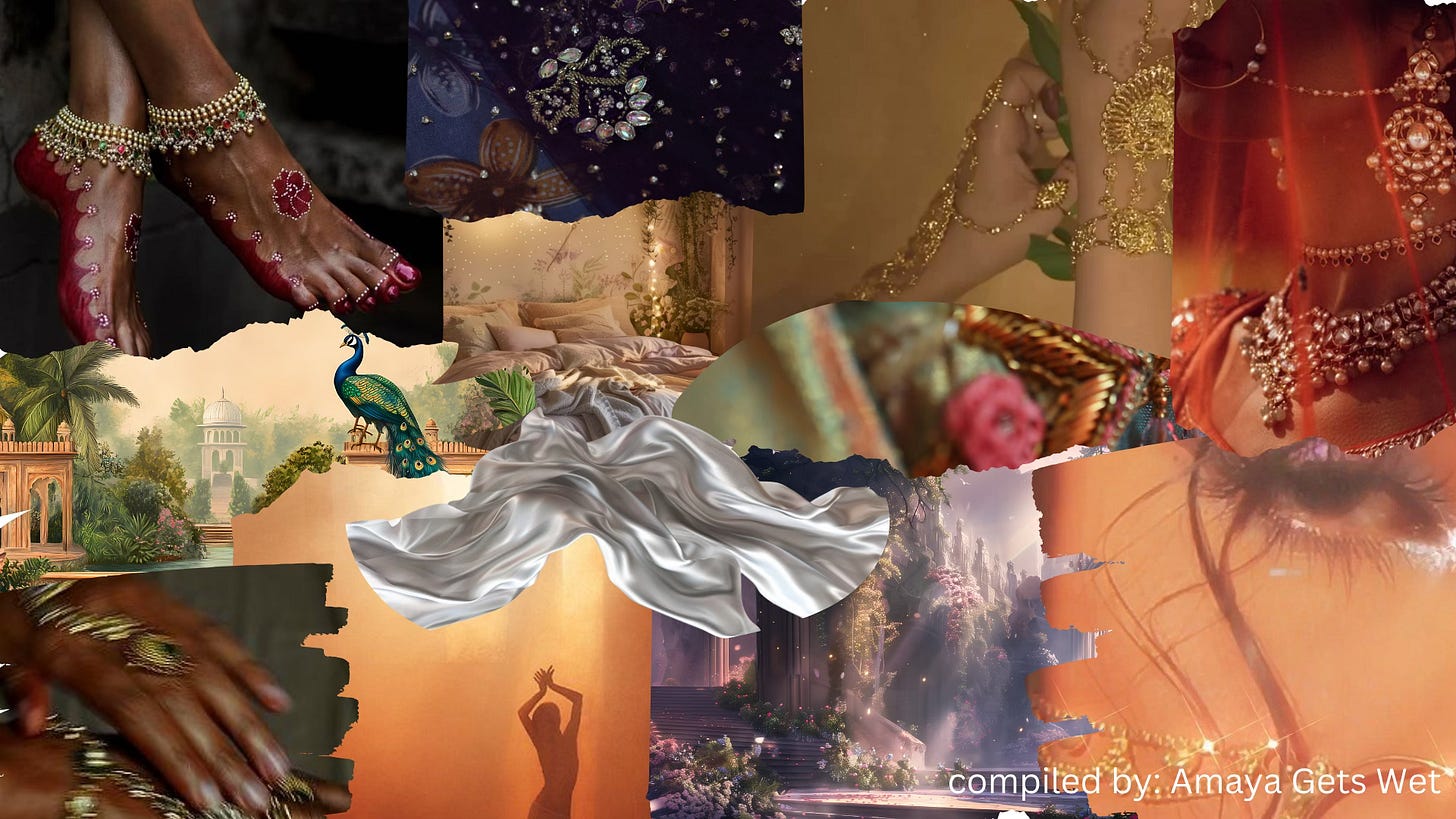I wore a payal (anklet) on a date night and the first thing my then boyfriend said was, ‘I want your ankles over my shoulders later’. I didn’t understand the change in mood, but I thought I wore something he had liked. The next morning, I had asked him why he was a little more excited than before? His answer was simple, ‘the anklet, baby’. Growing up, I loved the beauty of the payal. I’d wear variations throughout my years teen and twenties (still in my twenties). Threads, single chain, those flimsy things you’d get from fast-fashion sites because I loved the way it accentuated my feet, brought me closer to my culture, made me feel sexy.
However, I never knew the true reason why payals were always one of the staple jewellery pieces I’d wear. Why my grandmother, mother and aunty would wear them. So here’s a little history on the evolution of the payal. Hopefully when someone’s ankles are over your shoulders or your ankles are over your loved ones’ shoulder. You’ll be transported to 16th century Mughal India, which will add another layer of sexy mysticism in the bedroom…or wherever you guys like fucking.
Let me take you back to a time where the night sky would twinkle. Diamonds would shimmer under the navy sky. The palace would be alight with candles and the little chun chun sounds would echo through the halls of the grand palace. A paradox being created both by its innocence and erotic sensuality. Tawaifs (name for a courtesan: singer, dancer and poet) would use the soft tinkling of this beloved jewellery as a way to express art, music and culture. An invitation to become enraptured under their magic. It was integral in the mujra performance, where these beautiful women would seduce through their movement and the sounds the payal would create. Behind the embellished veil the movements and sounds would create an air of fascination for the spectator. Entranced in the mirage they created. These women truly held the magic in their movement and soul.
The maximal approach to these payals are simply a sight to behold, as they introduced the art of enamelling. This is where precious stones were set into the payals. The precious stones would add to their charm, creating an image of regality all the while adhering to the rules of Mughal court Tawaifs were highly educated in Persian, Urdu and literature, making them truly weapons in the Mughal courts. Unlike the Western perception of what a courtesan should be, Tawaifs were integral to shaping music, dance and literature. They would mix in the aristocratic circles, however it was their dancing that would hold the attention of the people at court- the chun chun of the payal.
As time went on and Colonial influence had swept the nation, the tradition of Tawaifs and their ways were condemned. The Anti-Nautch Movement campaign in the 1890’s had sought to efface performances by courtesans, ostracising them further from a society run by Victorian rules and regulations. It seemed like there was discomfort that the British encountered and therefore, brandished them as corrupt and morally degrading; linking them with prostitution. By the 20th century, they were outcasts.
So yes, I will wear my payal. It will be beautiful. Not only will I seduce with it, I will also shape my art, movement and literature.










Share this post